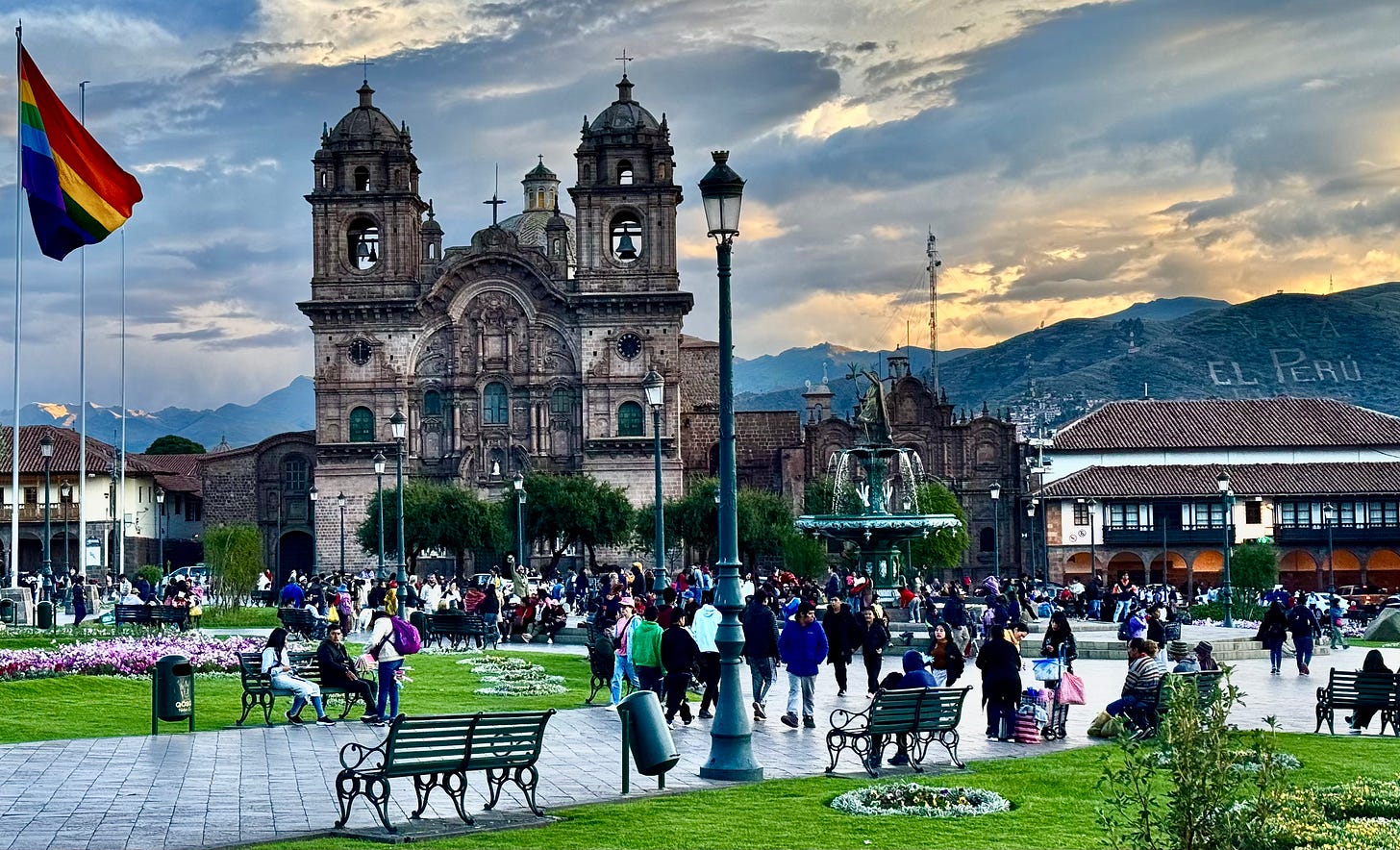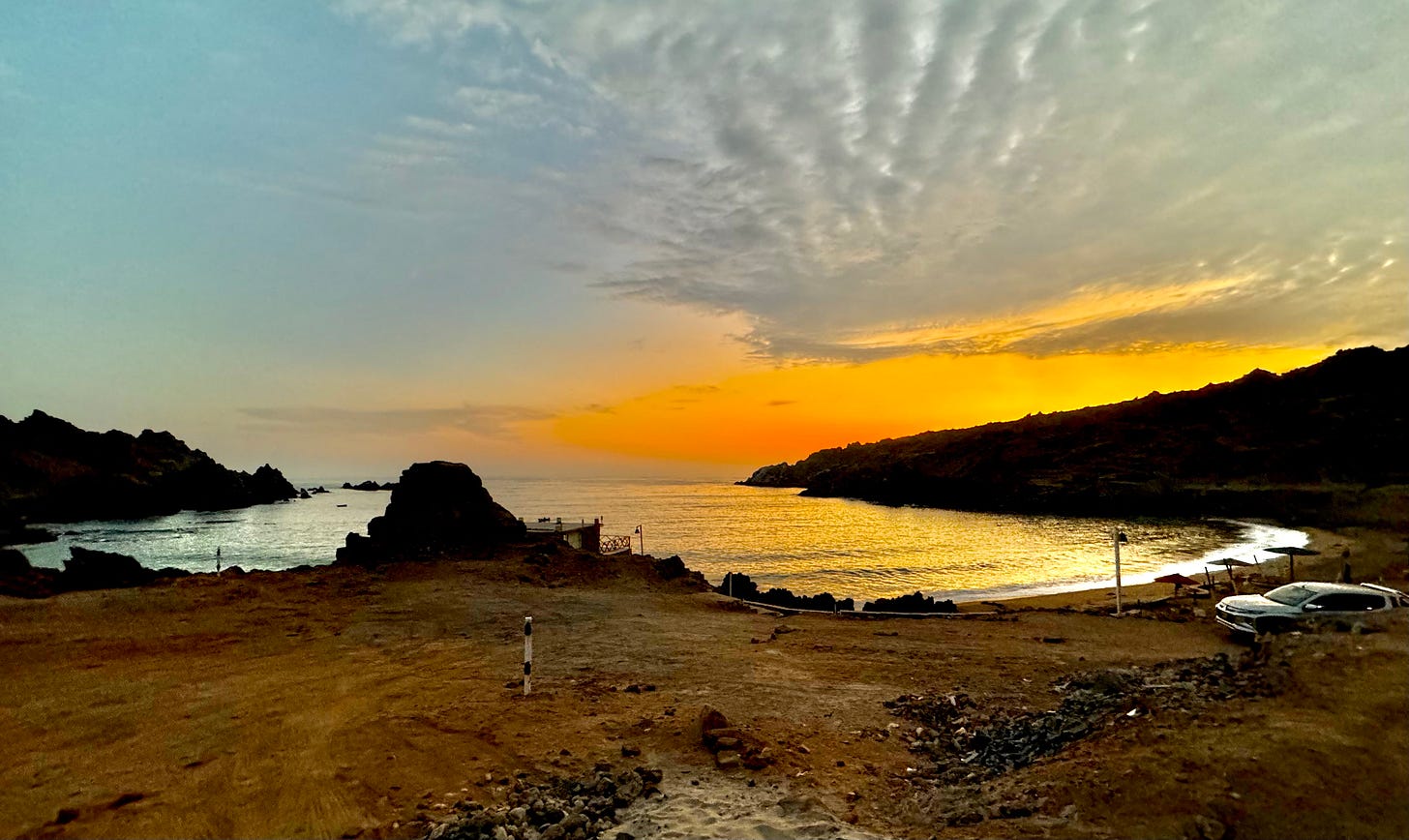Back from Peru
Hello! I just got back from an extended family vacation exploring Southern Peru.
My family's world-view is mostly formed from living in Taiwan, Hong Kong and Singapore.
But Peru is another world. Driving over multiple passes over 4,000 meters (13,000 feet) of altitude, we saw wild flamingoes, roaming herds of llama, got stopped by police nearly 10 times (once for a valid reason), ate well, met wonderful people, explored numerous Inca and pre-Inca ruins, and had many contemplative conversations about culture, conquest, civilization, geography, commodities and migration.
If you're into road trips, you really need to add "Peru road trip" to your travel bucket-list (a few photos at the bottom this note).
Driving long distance in Peru might actually be safer for foreigners than for locals, especially if you're from Lima. Peru is very socially polarized, and it's pretty obvious that once you're in the sierra, Limeños from the capital are not popular. Since Peru's final battle for independence 200 years ago, Peru's political elite in Lima has consistently failed to deliver prosperity or even basic services to most of Andean Peru.
Peru, with all of its gold and copper and a 500-year history of foreign prospecting, must rank as one of the grand-daddy's of resource-cursed countries. Almost 50 years ago (1980) the Maoist revolutionary movement known as the Cendero Luminoso (Shining Path) exploited these social injustices with tragic consequences that nearly tore the country apart and killed tens of thousands. Today many of the grievances remain unresolved. People in the sierra were very friendly, even the cops that stopped us and pondered what to make of this Spanish speaker with a Taiwan international driving license, but the resentment towards Limeños and generations of institutional segregation was palpable.
But I am optimistic about things getting better for most Peruvians, most likely for foolish reasons typical of a short-term tourist. Why?
I believe Peru's population will peak in 2025 resulting in a gradual shift towards labor scarcity and higher wages that will disproportionally benefit the poor. I think the Government is incorrect in its peak-population assessment by 41 years, thinking this peak will only happen in 2066. Though the misallocated budgeting implications of this error are definitely not credit-positive for the country, I think most working-age people will benefit;
I believe that in Peru the benefits of AI will outweigh threats, as AI applications will have the potential to finally deliver quality education to the neglected majority;
I believe Peru will overall fare better than many countries as a result of climate change. Although Peru faces big challenges from depleting water tables, flash floods, and warming sea temperatures, most people live well above sea-level and the country has many potential alternative places for migration and farming.
The tourism potential for Peru remains huge, and this sector could be a much larger employer. Outside of Cusco and Machu Picchu, there are still very few tourists going to Peru. But international flight connectivity to the US and Europe is mediocre and personal safety remains a concern, certainly compared to anywhere in East Asia.
I think one of the biggest threats to Peru (and many other emerging countries) is that we're getting closer to the day that the US and Europe will actually seal their borders and implement very large controlled-immigration programs, similar to Australia. These immigration programs will create a massive brain-drain effect on emerging countries because it will no longer be just the most-desperate (and often, least qualified) that are seeking to leave.
This week I've been in Singapore for Chinese New Year, and Port Moresby for work. I've been reading Shogun, by James Clavell. I look forward to finally being back in Taipei next week.
Hasta pronto,
Stefan











Love the article!